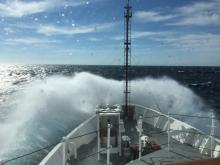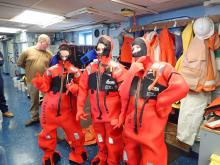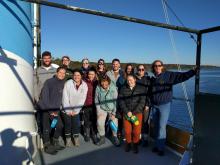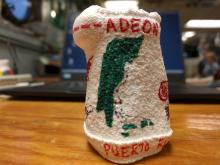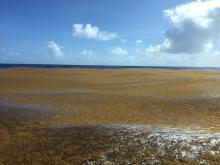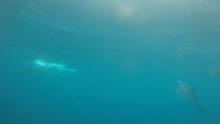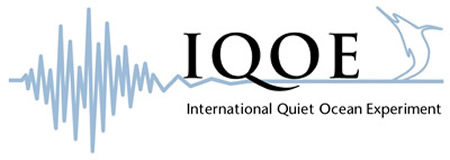I am Hali Rederer, a graduate student in the Biological Science Department at California State University Sacramento. As a volunteer on a twenty day scientific cruise aboard the RV Endeavor I will be occasionally blogging about the science and the people aboard. This blog results from an interview I conducted with a member of the ship’s crew.
Tags
Nov 02 – Chugging along by Cassie Fries
Hello from the R/V Endeavor! My name is Cassie Fries, and this is my second ADEON cruise. It’s nice to be back on the same ship as last time, making our set up and organization of equipment way easier since we have done this before. Coming back to the ship felt like a natural transition, making the next three weeks at sea easier (I even got my same bunk as last time).
Tags
01 November – Off to a rocky start by Brandyn Lucca (Stony Brook University, PhD student)
We are currently ~10 hours away from our first site off the coast of Virginia; however, if you had read Joe’s previous blog post, you will remember that the marine forecast does not look amazing. That is still the case now, as confirmed by both the marine forecast and my grueling bout with sea sickness yesterday and this morning (spoiler alert: I lost said bout).
Tags
Beginning the transition
Hi everyone! I’m Carmen Lawrence, an equipment technician at JASCO Applied Sciences from Dartmouth, Nova Scotia. This is my third ADEON cruise and I’m very excited to be back with the team. We’ve officially completed the first day of ADEON Cruise 3!
Tags
Happy Halloween from the RV Endeavor!
Happy Halloween!! The R/V Endeavor left the dock today on its third of five scheduled research cruises. Day 1 of each cruise is devoted to orientations, safety briefings, and general acclimation to life at sea. The science part and crew alike have gotten into the spirit with an overflowing bowl of candy in the mess (or dining room) and costumes (aka orange gumby suits)!
Tags
31 October - And away we go…
The third ADEON sampling cruise has begun – EN626 left the dock in Narragansett, Rhode Island at 9am this morning. EN626 is the cruise acronym and stands for the ship (EN = RV Endeavor) and the number indicates that this is the 626th research cruise the Endeavor has done.
Tags
Signing off from the R/V Endeavor EN615 ADEON Cruise!
25 June – Return to Shore. Joe Warren, Chief Scientist.
Well, the three weeks have flown by (or more accurately sailed by), and we have returned to land at the University of Rhode Island. We finally got some poor weather so the past two days have been a transit through some lumpy seas, but we were able to get all our science mission accomplished this trip PLUS lots of extra sampling as well since we had good weather for most of the trip.
Tags
Today is a trial of patience.
Today is a trial of patience. Looking out the portholes, we can see land, but we can’t yet step foot on it. We’ve completed our science, have begun the process of breaking down the shipboard lab, and are currently sitting offshore waiting for the tide to be right to motor up Narragansett Bay to the dock at the University of Rhode Island’s Graduate School of Oceanography.
Tags
Flotsam and Jetsam.
You’d be surprised at what you become fixated on when you’ve seen nothing but blue for two weeks. Our world on land is filled with visual stimulation. Our brains crave it. I know we like to roll our eyes at the youths and their addictions to screens and gadgets, but our cavemen ancestors were staring into fire and drawing on cave walls since before Snapchat. Out here, it’s all blue. Blue water and blue sky. Jen Miksis-Olds.
Tags
Under the Hood by Brandyn Lucca, Blog 23 June 2018
I had previously alluded to the “acoustic fingerprint” (or how objects reflect sound in the water) of marine critters we detect via our echosounders in my first blogpost, and I’d like to expand a little bit on that today. An animal’s acoustic fingerprint, or target strength (TS, dB re: 1 m2), is affected by a lot of things, such as an animal’s size (e.g., length, fatness) and shape (e.g., round, skinny), and how the animal is oriented relative to the surface (e.g., horizontal, head facing the surface).
Tags
Pagination
- Previous page
- Page 9
- Next page
Copyright 2016 · All rights reserved


